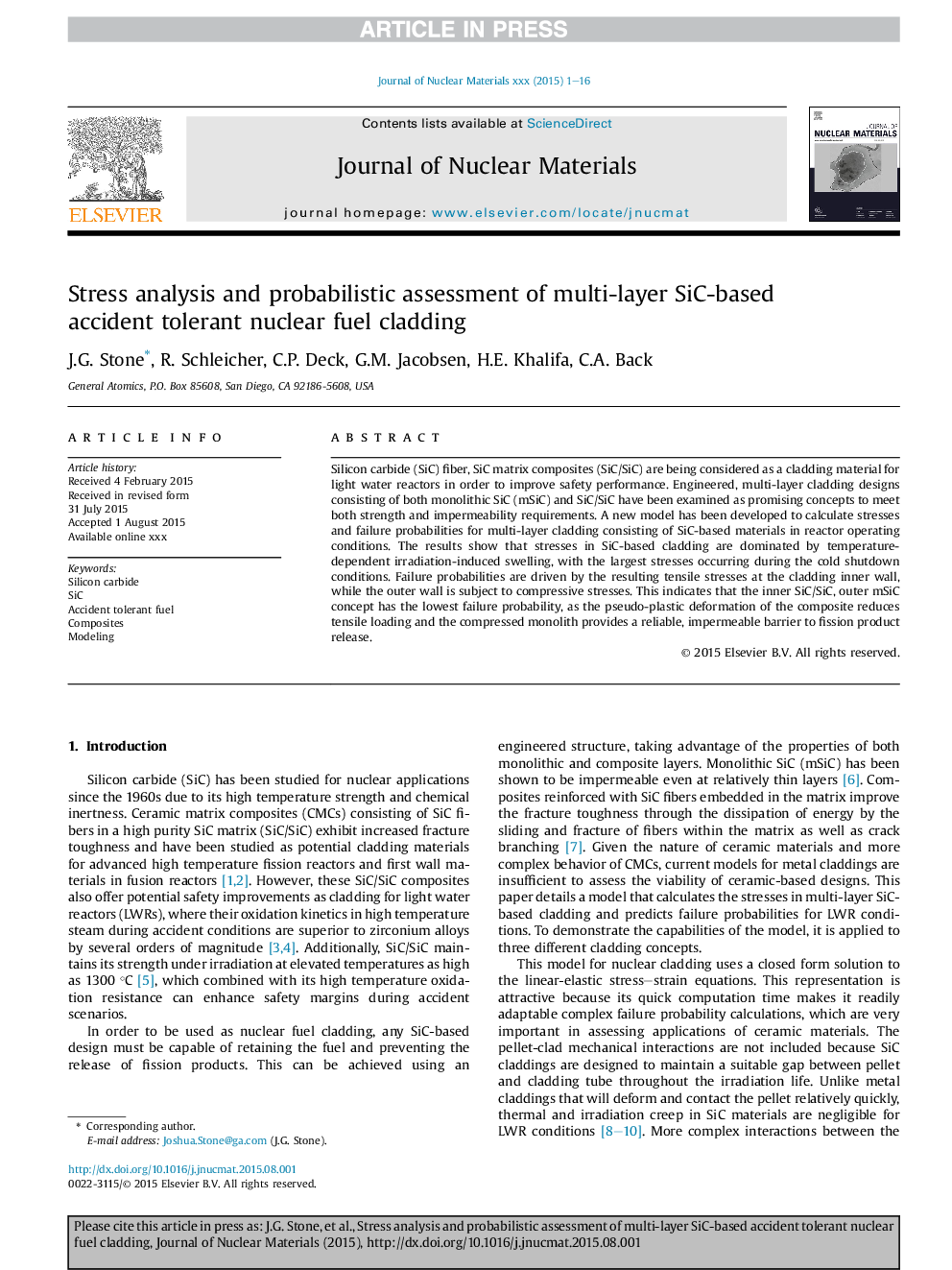| Article ID | Journal | Published Year | Pages | File Type |
|---|---|---|---|---|
| 7965102 | Journal of Nuclear Materials | 2015 | 16 Pages |
Abstract
Silicon carbide (SiC) fiber, SiC matrix composites (SiC/SiC) are being considered as a cladding material for light water reactors in order to improve safety performance. Engineered, multi-layer cladding designs consisting of both monolithic SiC (mSiC) and SiC/SiC have been examined as promising concepts to meet both strength and impermeability requirements. A new model has been developed to calculate stresses and failure probabilities for multi-layer cladding consisting of SiC-based materials in reactor operating conditions. The results show that stresses in SiC-based cladding are dominated by temperature-dependent irradiation-induced swelling, with the largest stresses occurring during the cold shutdown conditions. Failure probabilities are driven by the resulting tensile stresses at the cladding inner wall, while the outer wall is subject to compressive stresses. This indicates that the inner SiC/SiC, outer mSiC concept has the lowest failure probability, as the pseudo-plastic deformation of the composite reduces tensile loading and the compressed monolith provides a reliable, impermeable barrier to fission product release.
Related Topics
Physical Sciences and Engineering
Energy
Nuclear Energy and Engineering
Authors
J.G. Stone, R. Schleicher, C.P. Deck, G.M. Jacobsen, H.E. Khalifa, C.A. Back,
